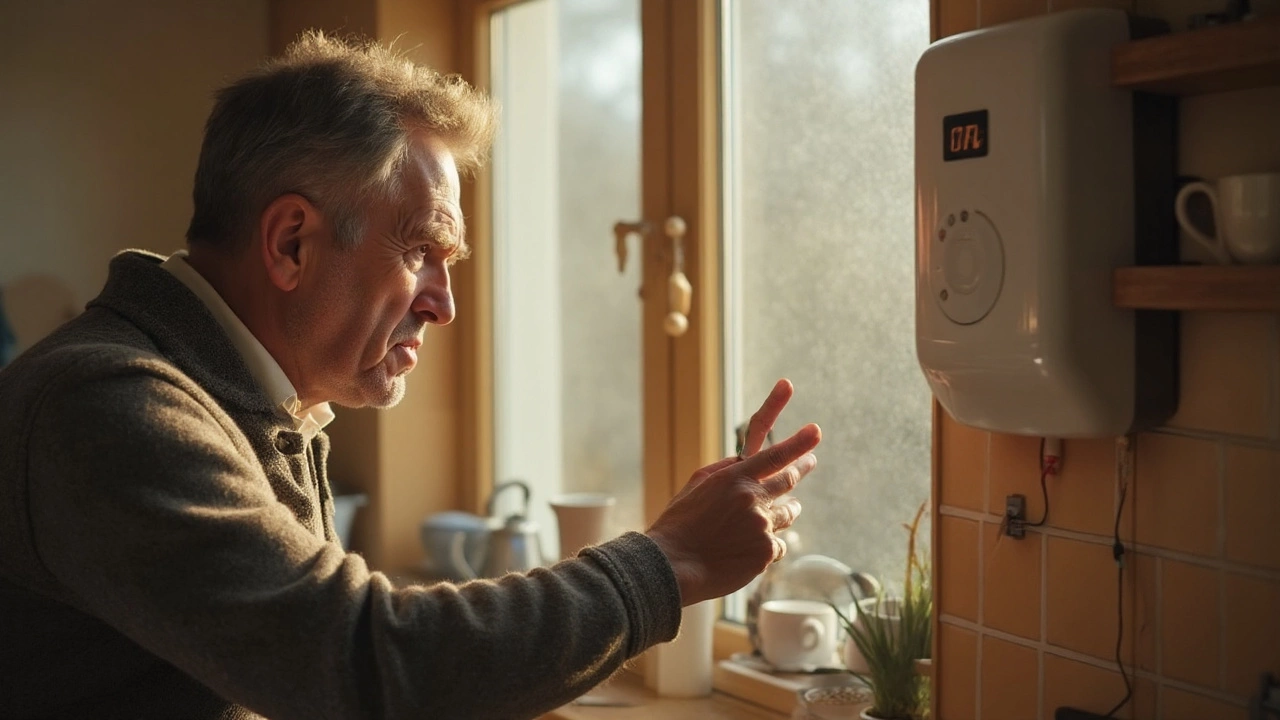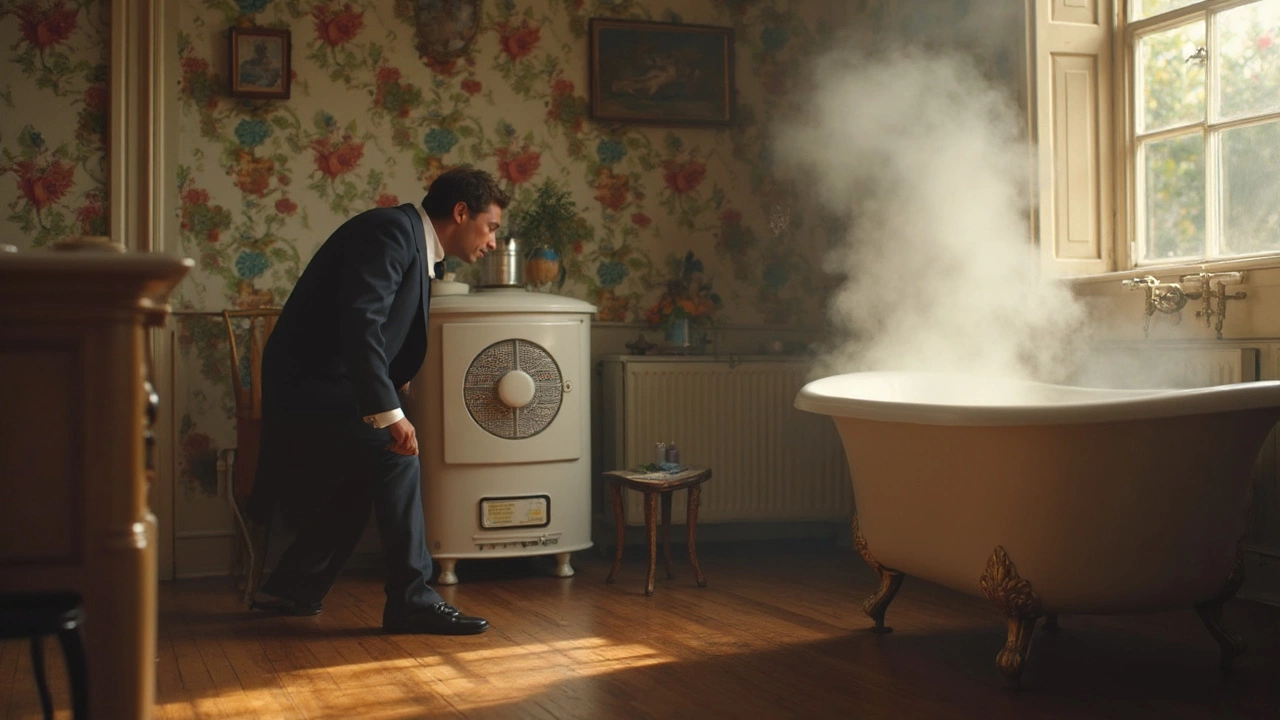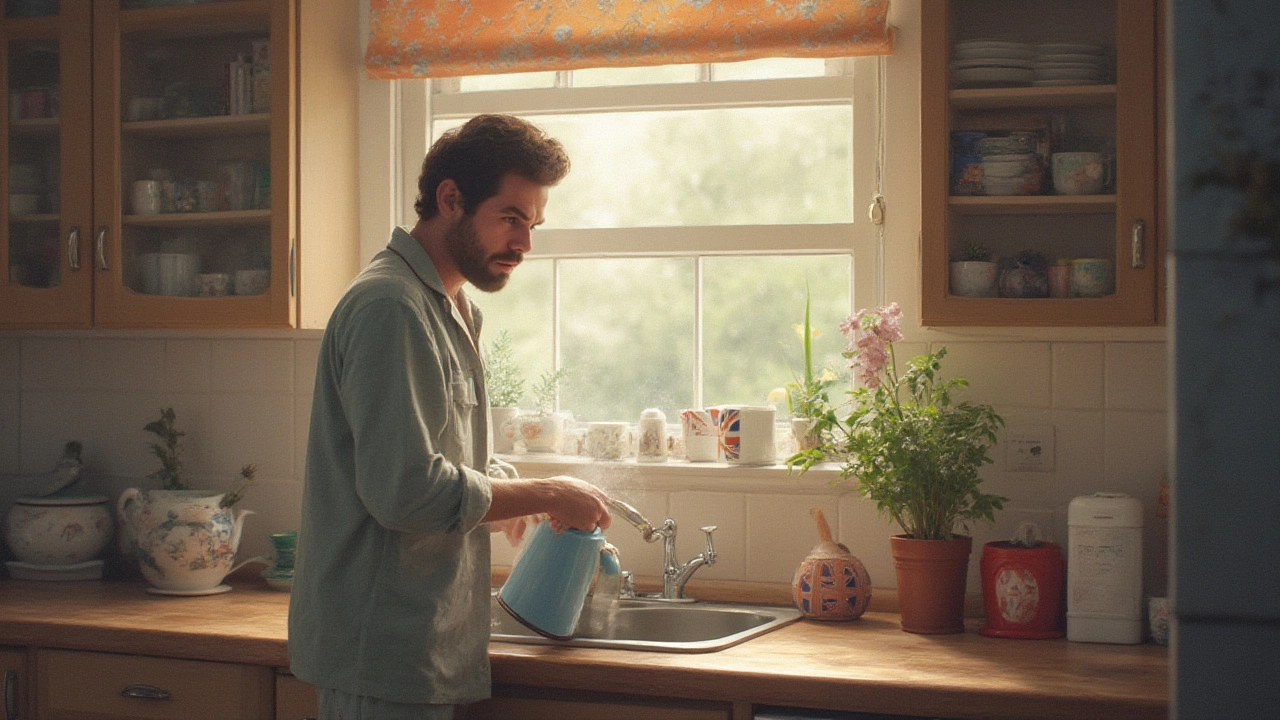
- 6 Aug 2025
- Gideon Thornton
- 0
Waking up to cold showers never feels like a fun way to start the morning. Yet, it’s a classic rite of passage for any homeowner: that moment you stand in front of your water heater, flipping switches and twisting knobs, muttering, “Why won’t my hot water heater kick on?” Instead of calling a plumber right away, take a second. Most water heater troubles have a handful of common causes—some simple to fix, some best reserved for the pros. And sometimes, like Whiskers commandeering your favorite blanket, these problems strike out of nowhere. You don’t have to be a seasoned handyman to get a solid grip on what’s wrong, though. Let’s break down hot water heater no-shows, dig into what makes these beasts tick (or not tick), and tackle fixes that won’t have your cat wondering why the bath is so chilly.
Common Reasons Your Hot Water Heater Won’t Kick On
If you’re standing there, goosebumps rising, and wondering what’s keeping your tank from doing its one job, you’re not alone. The problem usually boils down to a few usual suspects, no matter if your water heater is electric, gas, or even one of those sleek on-demand tankless types. So, why would a water heater just refuse to kick on?
Power supply is the first place to check. For electric models, if there’s no juice—maybe from a tripped circuit breaker or a blown fuse—the heating elements can’t do their thing. Gas heaters have their own quirks: a closed gas valve, a blown-out pilot light, or an issue with the thermocouple. Tankless models aren’t immune, either. Yes, they’re fancier, but they still need electricity and, often, a minimum flow rate of water before anything heats up. If your hot tap’s just dribbling, that can keep even the best tankless system asleep.
Thermostats or temperature settings are often overlooked, but they play a sneaky role. If set too low (or worse, if the thermostat has malfunctioned), your water heater might decide it’s not needed. A fried thermostat is one of the most common reasons for a hot water heater’s stubborn silence. Sometimes, sediment buildup on the bottom of the tank insulates the thermostat from the true temperature, tricking it into thinking everything’s just fine.
Safety features get triggered more than you might think. Modern units come with all sorts of fail-safes: high-temperature cutoff switches, pressure relief valves, and sensors. If something seems unsafe, even a bit, these features cut power or gas automatically. A reset might do the trick, especially for electric heat. On the flip side, if you find yourself resetting the heater more than once a month, there’s a deeper problem brewing. That’s your cue to look closer.
Pilot lights and ignition systems are a story in themselves. If you’ve got an older gas heater, the pilot light is the little flame that signals “all systems go.” Drafts, moisture, or a little spider web can snuff it out. Some newer heaters use electronic ignition—they “click-click” on demand. If those fail, the heater just stays silent, no matter how many times you hit the hot tap.
Let’s talk about water supply for a moment. Your hot water heater’s job is about heating water, true, but it can’t do the job if it isn’t getting water in. A closed inlet valve, a kinked supply line, or sediment clogging things up means the heater thinks it’s empty. These blockages aren’t rare, especially if you live somewhere with hard water. Even a bit of corrosion or mineral buildup makes a big difference over time.
Want to see how these problems stack up with real-world numbers?
| Common Issue | Chance it Causes No Heat (%) | Quick Home Fix |
|---|---|---|
| Tripped Circuit or Fuse | 34 | Reset breaker, replace fuse |
| Pilot Light Out | 27 | Relight pilot |
| Faulty Thermostat | 18 | Replace thermostat |
| Sediment Buildup | 11 | Flush tank |
| Blocked Water Supply | 5 | Check inlet valve and lines |
| Broken Heating Element | 5 | Replace element |
Notice how a few fixes cover most cases? You don’t need to be a rocket scientist. Still, knowing how each part works helps you troubleshoot without just throwing parts (or worse, money) at the problem.

How to Troubleshoot a Hot Water Heater That Won’t Turn On
Let’s get your hands a little dirty (the clean, safe kind of dirty). You’ll need a few basic tools: a flashlight, screwdriver, maybe a multimeter, and some patience. Don’t be a hero—if you’re ever unsure or smell gas, call a pro. Here’s a method most homeowners, even first-timers, can follow without risk.
- Safety first: Switch off power at the breaker for electric heaters; shut the gas valve for gas models. Let the heater cool down before touching it. You wouldn’t poke a beehive without gloves, right?
- Check the power supply: Head to the electrical panel. If your circuit breaker has tripped, flip it back. Still not working? Swap out the fuse, or try a different outlet if it’s a plug-in under-sink tankless unit.
- Inspect the thermostat and reset button: Remove the access panel on the heater. Look for a reset button—usually red, right near the thermostat. Press it. Sometimes, sediment or dust trips the high-limit switch for no real reason.
- Pilot light problems: Peek through the glass window or open the little inspection panel. No blue flame? Check your manual’s relighting steps—usually something like turning the knob to “pilot”, pressing it in, and clicking ignite. If it won’t hold, suspect the thermocouple or flame sensor.
- Water supply line checks: Move the shut-off valve handle and make sure water flows in. If your pipes clang or water pressure is weird, look underneath for kinks or leaks.
- Listen for odd sounds: Electric heaters sometimes make popping sounds when there’s sediment at the bottom. Gas models with a hissing or whistling noise may have ventilation issues.
- Sediment flush: Attach a garden hose to the drain valve near the tank base. Open the spigot, empty a bucket or two, and repeat. Brown water means you’re flushing out mineral gunk. You’ll often notice better heating after this quick DIY.
- Thermostat and element test: For the electrically savvy, a multimeter can tell you if the thermostat or elements are shot. No continuity? Time for a swap.
- Tankless quirks: If your tankless water heater stays cold, turn on a few taps at once. Sometimes, low water flow keeps it from sensing demand. Also, clean the water filter or inlet screen if you spot one—these clog way too fast in homes with hard water.
Poor Whiskers once leapt on my water heater, set off the reset button, and left me puzzling over no hot water for an entire morning. Pets and kids sometimes hit buttons and switches without us realizing. If all else fails, a hard reset (power off, wait, power on) clears small glitches in newer models.
If you stumble across burnt wires, corrosion, or a gas smell, stop troubleshooting and call the pros. Water heaters can leak electricity or gas, so these aren’t DIY territory.
Still not clicking on? Write down everything you checked before you call in help. That way, you’ll save on labor fees, and the repair tech can jump right to the fix instead of retracing your steps.

When to Repair, Replace, or Upgrade Your Hot Water Heater
Your trusty *hot water heater* has an expiration date. Yes, they’re workhorses, but nothing lasts forever—not even the high-end tankless wonders. Most tank-style heaters put in 8-12 years before the trouble starts piling up. Tankless models push 20 years with a little luck and regular flushes. If yours is living on borrowed time, constant no-heat hiccups are a sign it’s time to think about a replacement rather than another repair.
How can you tell if it’s smarter to repair or replace? Here’s a way to size it up:
- If the repair cost is more than half the price of a new heater, upgrade. Modern heaters use way less energy (over 20% less than 2010 models, according to the Department of Energy), so you’ll make up the difference on your next utility bill.
- If you notice leaks from the tank itself (not just connections or pressure valves), that’s game over—the tank can’t be patched.
- If you need to reset or reignite it every few weeks, or if the hot water runs out super quickly, the inner tank might be coated in sediment or the heating elements worn out. That’s not worth nickel-and-diming, since labor and parts add up fast.
Then there’s the comfort and efficiency angle. An older water heater eats up cash in wasted energy. Swapping to a new model could save the average family up to $200 a year—more if you pick a heat pump or high-efficiency tankless. Newer models often have electronic displays, built-in leak sensors, and self-cleaning features. If you like data, some units let you monitor energy use from your phone or even tie in with home automation. That’s a far cry from the old days of listening for pops and bangs.
Before you make the leap, measure your home’s hot water needs. Got a family of five, or do laundry while everyone’s showering? Size up your tank or pick a tankless with the right GPM (gallons per minute). Skimping on size means the dreaded lukewarm surprise bids your mornings hello all over again.
Installation isn’t always a DIY job. Permits and strict codes apply in some areas—especially with gas hookups. Missing a step or piping something wrong could leave you out of hot water for days, or worse, in danger. Always call for professional help if things get hairy, or if you’re not sure your skills match the project.
Even so, a water heater should help, not stress you out. Know the warning signs, do the simple checks, and don’t put off calling a pro for the trickier stuff. With a well-running water heater, you can focus on more important things—like wrestling your blanket back from the cat.




